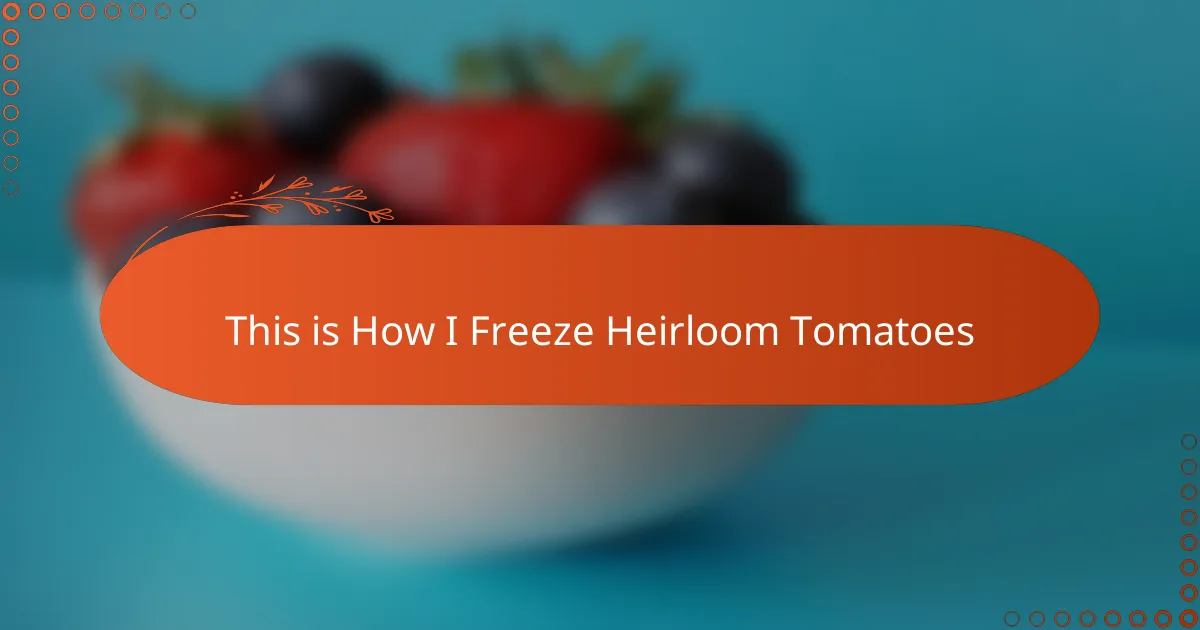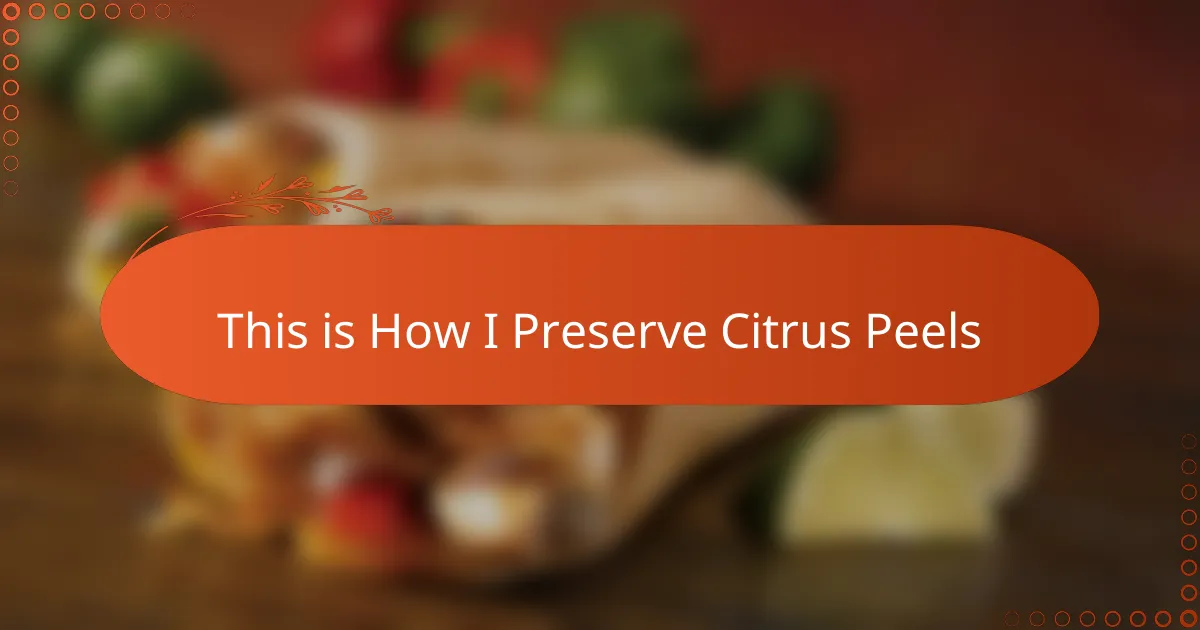Key takeaways
- Heirloom tomatoes are unique, flavorful varieties that carry rich histories, offering a connection to heritage through gardening.
- Freezing heirloom tomatoes preserves their flavor, reduces food waste, and allows for enjoyment of summer tastes during winter months.
- Preparation for freezing includes selecting the right tomatoes, blanching for peeling, and using various methods like freezing whole, pureeing, or slicing.
- Proper storage and organization in the freezer are essential to prevent freezer burn and maintain the quality of frozen tomatoes for cooking later.
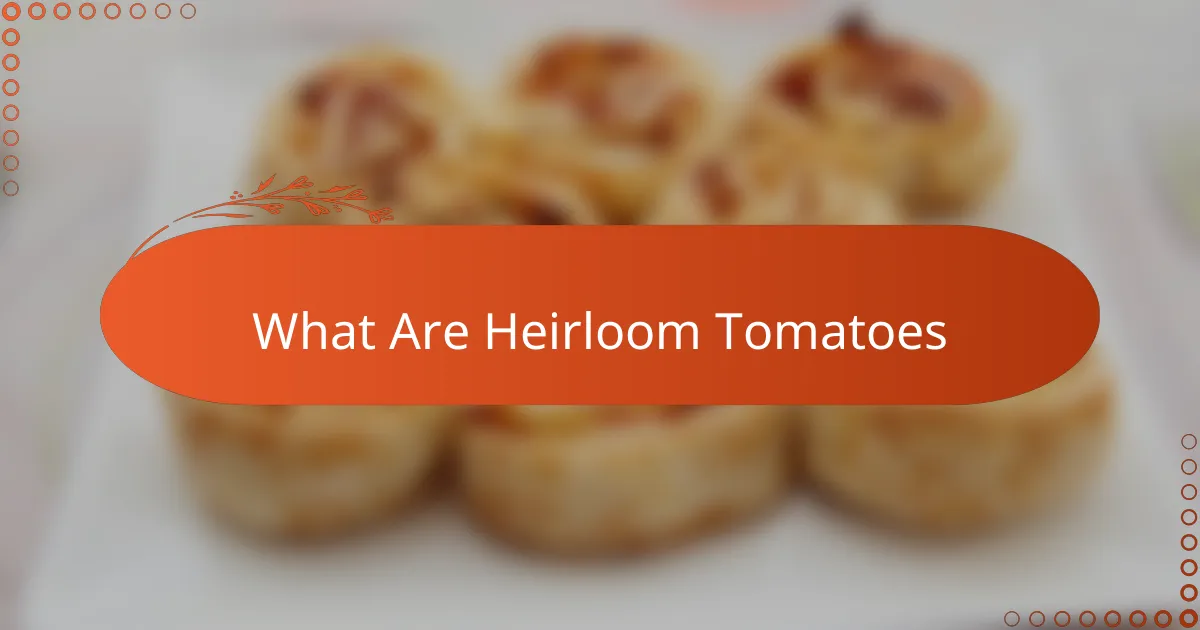
What Are Heirloom Tomatoes
Heirloom tomatoes have always fascinated me because they carry stories with every bite. Unlike the uniform, glossy tomatoes you see in grocery stores, heirlooms come in a wild tapestry of colors, shapes, and flavors—each variety reflecting a history passed down through generations.
I often wonder why these tomatoes aren’t as common as their hybrid cousins. Could it be that their fragile skins and unique growing needs make them less suited for mass production? For me, that only makes them more special, like hidden gems on a homestead garden.
Growing up, my family treasured heirloom tomatoes for their rich, complex taste that no store-bought tomato can match. They remind me that food isn’t just fuel; it’s a connection to heritage, nature, and the simple joy of growing something truly authentic.
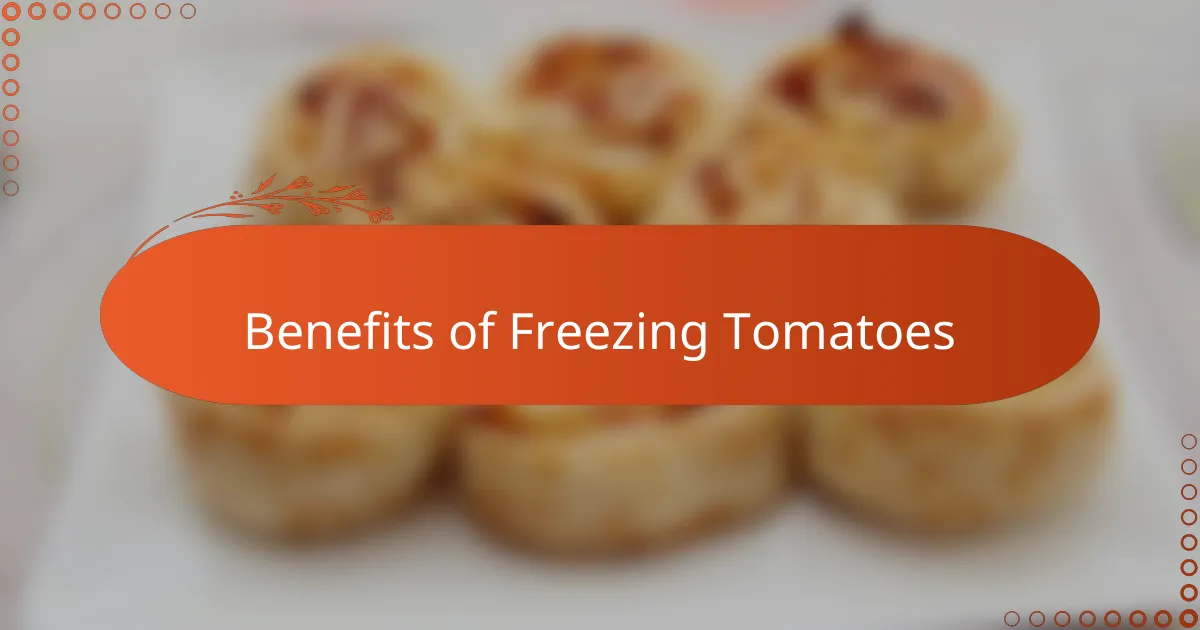
Benefits of Freezing Tomatoes
Freezing heirloom tomatoes has been a game-changer in my kitchen, especially when the harvest is abundant and I can’t possibly use them all fresh. It locks in that vibrant flavor and richness I adore, preserving the taste of summer for months to come. Have you ever noticed how fresh tomatoes lose their punch when out of season? Freezing puts an end to that disappointment.
I also find that freezing heirlooms saves me from food waste, which is something I care deeply about. Instead of watching those precious fruits soften and spoil, I can quickly freeze them and have an easy base for sauces or stews later. It feels like a little act of respect to the effort I put into growing or sourcing these gems.
Plus, there’s something comforting about knowing I can enjoy the unique complexity of heirloom tomatoes anytime. When winter hits and fresh produce is limited, reaching into the freezer and pulling out a bag of frozen tomatoes brings back memories of sunny garden days. Isn’t that a wonderful way to keep the spirit of homesteading alive all year round?
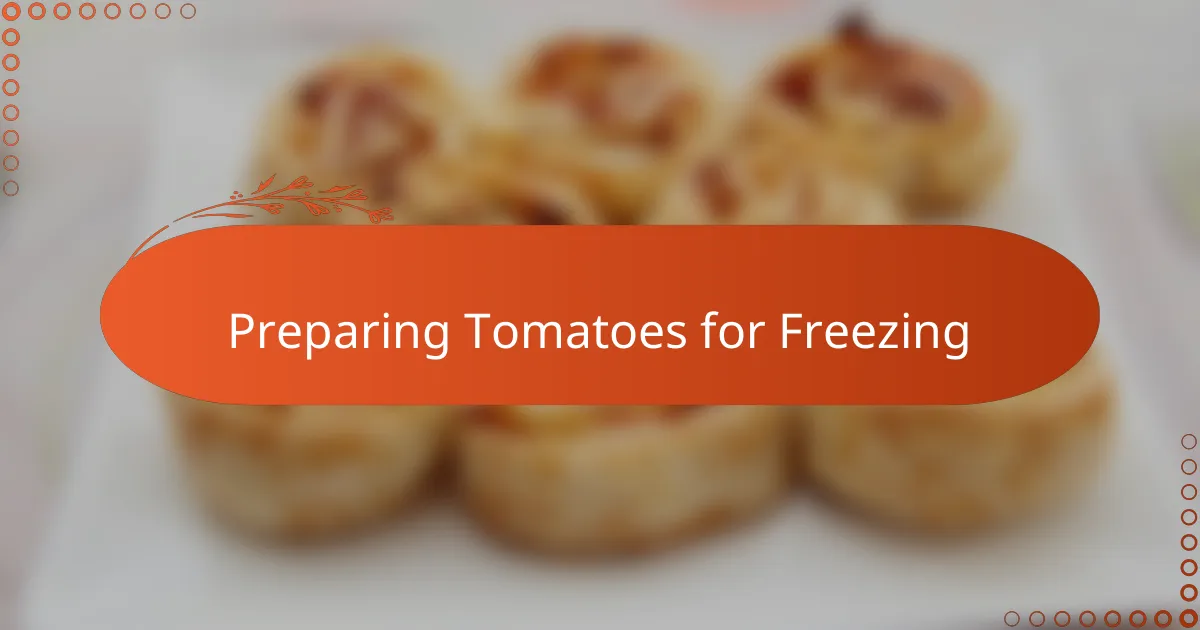
Preparing Tomatoes for Freezing
Preparing tomatoes for freezing starts with selecting the perfect ones—ripe but firm, so they hold their character through the freezing process. I always take a moment to gently wash and pat each tomato dry, feeling that tiny connection to the garden as I handle them.
Next comes peeling, which I have found is crucial for a smooth texture when cooking later. I blanch the tomatoes briefly in boiling water, just enough to loosen the skin, then dunk them in ice water. It’s a simple step, but it feels like a little ritual, stripping away the outer layer to reveal the heart of the tomato beneath.
After peeling, I slice or quarter the tomatoes, depending on how I plan to use them, and remove the core if it’s tough. Have you ever noticed how this part slows you down, making you appreciate the tomato’s unique shape and history? For me, it turns mundane prep into a mindful pause before preserving summer’s bounty.
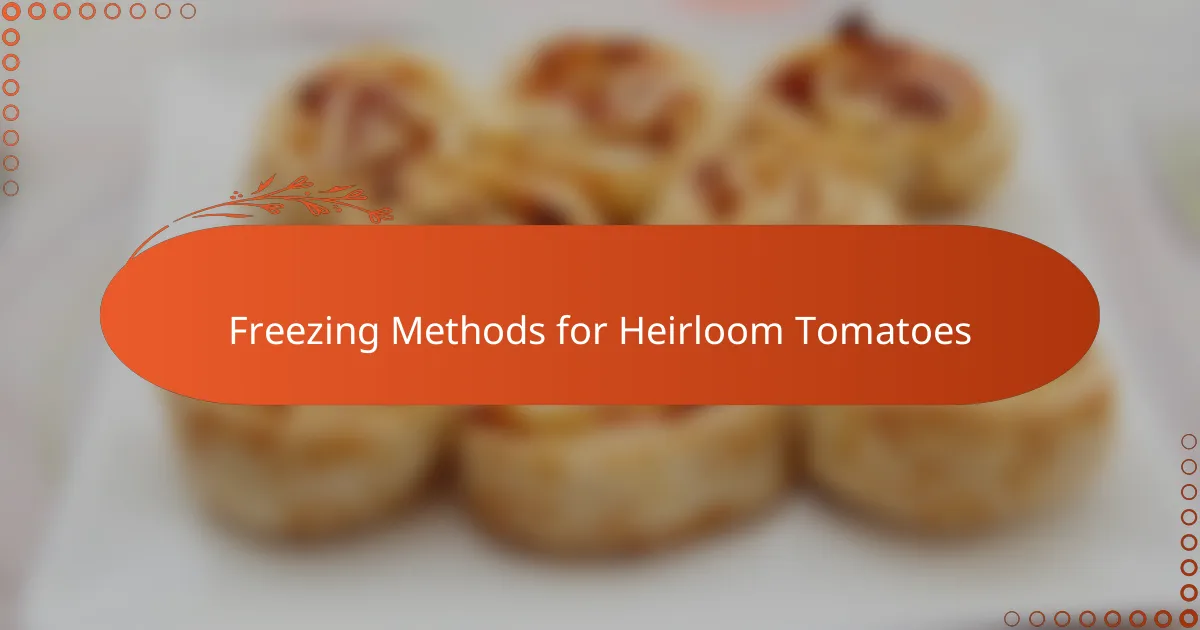
Freezing Methods for Heirloom Tomatoes
When it comes to freezing heirloom tomatoes, I’ve discovered a couple of methods that really bring out their best. One way I love is freezing them whole—just after washing and drying, I pop them straight into freezer bags. It might seem simple, but this method keeps the unique shape and flavor locked in, and it’s so convenient when I want to simmer them later without fuss.
Sometimes, I prefer to puree the tomatoes before freezing, especially if I plan to use them in sauces. It feels like capturing the essence of the tomato in a jar of summer sunshine, ready to be thawed and transformed into rich, comforting meals. Have you tried this? The smooth texture after thawing makes cooking a breeze, and it’s delightful knowing every spoonful holds those heirloom flavors.
Then there’s the option of freezing tomato slices or chunks, which I find perfect for tossing directly into stews or sautés. It’s almost like having fresh tomatoes at your fingertips, only without the rush to use them immediately. Freezing in portions like this balances convenience with preserving that fresh taste I adore—something I’ve come to rely on during long winter months.
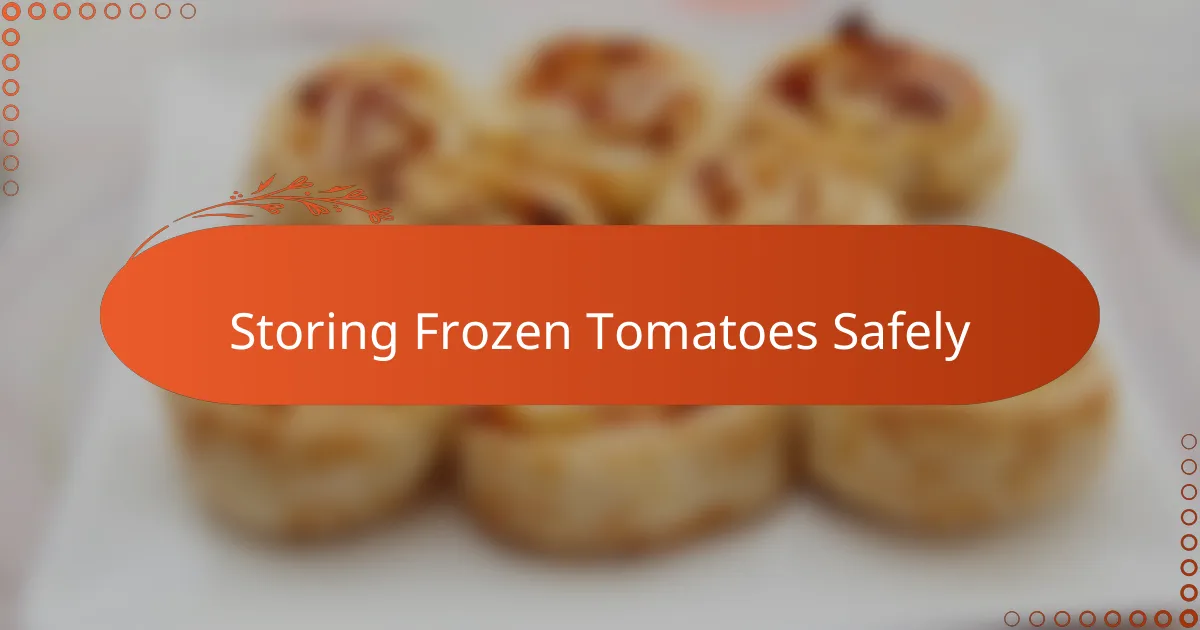
Storing Frozen Tomatoes Safely
Storing frozen tomatoes safely has always been important to me, not just to preserve flavor but to keep those precious heirlooms free from freezer burn. I make sure to use airtight containers or heavy-duty freezer bags, squeezing out as much air as possible. Have you ever found your tomatoes tasting “off” after just a few weeks? That’s usually the culprit—tiny ice crystals stealing their vibrant essence.
I also label each package with the date because, let’s face it, time flies in the freezer. Knowing when I froze the tomatoes helps me plan meals so nothing gets forgotten and lost in the freeze. From my experience, using frozen tomatoes within six months keeps that fresh garden taste alive, which always makes winter cooking feel like a celebration.
One simple habit I’ve picked up is organizing my freezer space to prevent temperature fluctuations—no one wants thawed and refrozen tomatoes. I treat the freezer like a mini pantry, giving heirloom tomatoes a cozy, stable spot that honors their journey from vine to winter meal. Have you noticed how a little care at this stage transforms frozen tomatoes from dull to delightful? That attention makes all the difference in my homesteading kitchen.
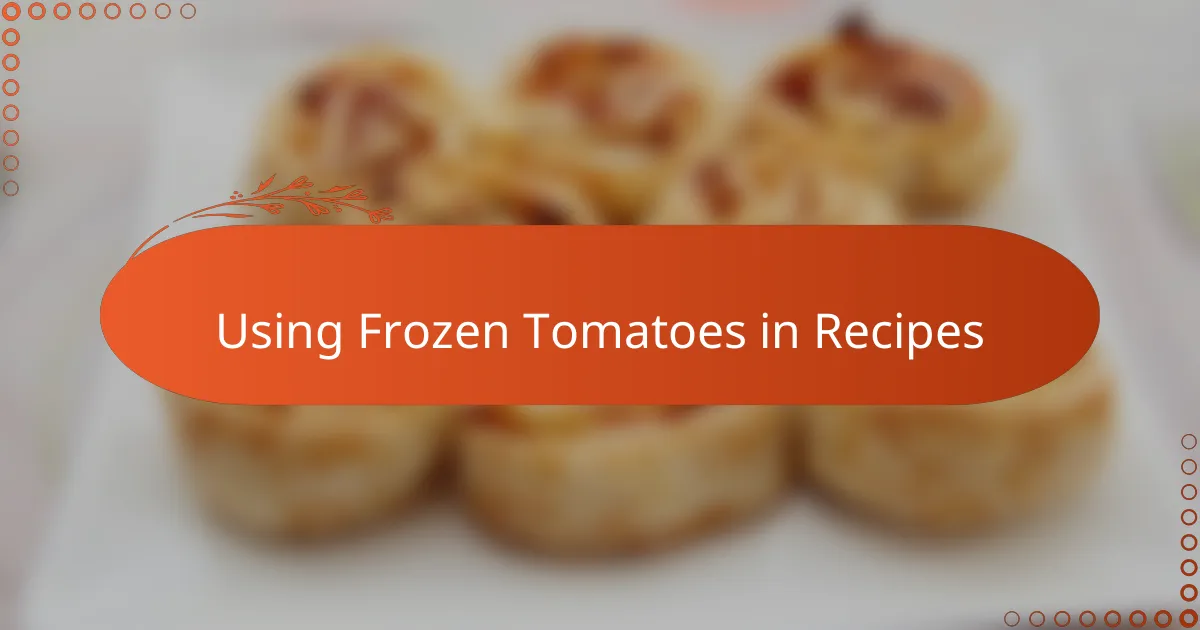
Using Frozen Tomatoes in Recipes
Using frozen heirloom tomatoes in recipes feels like unlocking a secret pantry of summer’s best flavors. I often thaw them gently and toss them into soups or sauces, where their texture softens beautifully without losing that rich, natural sweetness. It’s amazing how these frozen gems can elevate a simple dish, making it taste like the height of tomato season, even in the dead of winter.
Have you ever wondered if frozen tomatoes can stand up to fresh ones in a salad? From my experience, they’re better suited for cooked dishes because freezing breaks down their firmness. I’ve learned to embrace that softness, letting it meld seamlessly into hearty stews, chilis, or slow-cooked recipes. It turns out, the slight mushiness after thawing adds a layer of cozy comfort rather than disappointment.
One trick I love is adding frozen heirloom tomatoes directly from the freezer into a simmering pot. No need to thaw first—just like nature’s little time capsules releasing vibrant flavor at the perfect moment. It saves me precious time on busy days, and I always smile thinking about the sun-soaked garden that these tomatoes came from, now enriching my winter meals with every spoonful.
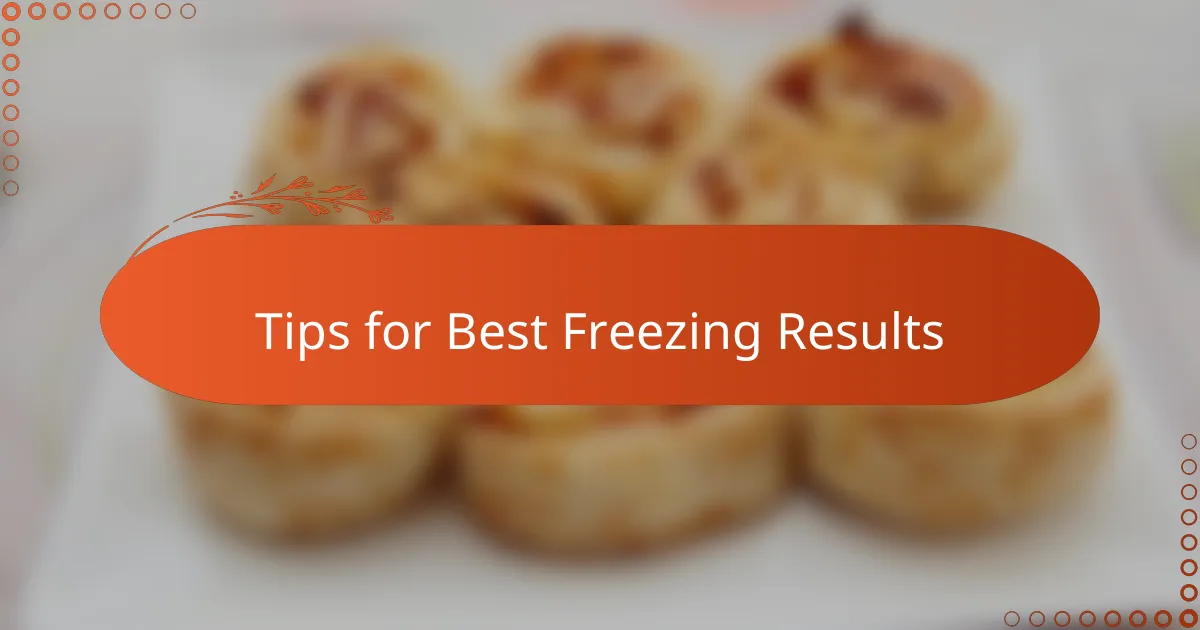
Tips for Best Freezing Results
Getting the best freezing results for heirloom tomatoes takes a bit of care, but it’s so worth it. One thing I swear by is making sure the tomatoes are completely dry before freezing—sometimes I even let them air out a little longer after washing. Moisture is the enemy here; it can cause ice crystals that ruin that vibrant texture and flavor I treasure.
Have you ever noticed how tightly you pack tomatoes into the freezer bag affects their quality later? From my experience, leaving just a little space to spread them out—or even freezing them on a tray before bagging—prevents clumping and makes it easier to grab exactly what I need. It feels like giving each tomato its own little winter home, which somehow preserves their character better.
Finally, I can’t stress enough how important proper sealing and labeling are. There’s nothing more disappointing than finding a bag half-empty because it got freezer burn or mixed up with another stash. Putting a date on each package helps me stay organized and keeps that summer’s harvest alive in my kitchen for months. Doesn’t that kind of mindful care make the whole freezing process feel like an act of love?
